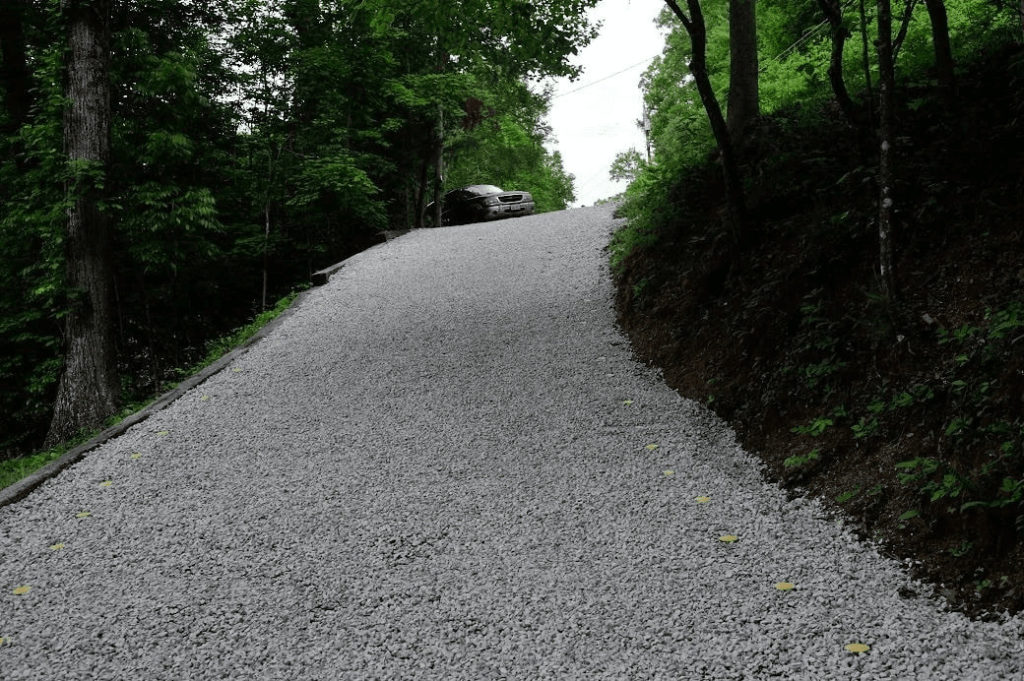The two most popular types of pavement are asphalt and concrete. Both materials are used in parking lots, sidewalks, and other paved areas all over the world, and while regular concrete and asphalt are the most popular choice for pavement, crushed concrete and crushed asphalt are also useful in many cases.

These materials have different pros and cons as opposed to the non-crushed varieties, and you may prefer one over the other depending on your needs and personal preferences. In case you’re thinking about implementing crushed concrete or asphalt as a paving solution, let’s take a look at some of their properties and how they stack up against each other.
What is Crushed Asphalt?

Crushed asphalt is exactly what it sounds like, old asphalt that’s been recycled and crushed into tiny pieces suitable for use in paving and landscaping, among other things. It has many of the same properties as gravel but looks different in color and is also comprised of crushed-up, dried tar as well.
Crushed asphalt is almost always black in appearance though you get specks of yellow or white from parking lot lines, depending on where your asphalt is sourced from. Crushed asphalt, as a paving material, is one of the cheapest options you can find, and it is eco-friendly as well.

Producing asphalt releases a lot of greenhouse gasses, so by using crushed asphalt instead of new, solid asphalt, you are making the more environmentally-friendly choice.
Crushed asphalt also has the benefit of being permeable, meaning it can drain liquids through itself. This is a benefit for people who are worried about flooding or having to reseal their asphalt surfaces every 5 years to prevent water intrusion.
For driveways and pathways, this can help prevent runoff from causing erosion along the sides. For parking lots, it can mitigate or even eliminate the amount of additional drainage you need to add.
Because of this permeability, using crushed asphalt will save you a lot of money on maintenance. Regular asphalt surfaces need to be resealed every 5 years and resurfaced every 10. You’ll also save time and money on having to repaint lot lines if you’re building a parking lot.
What is Crushed Concrete?
Crushed concrete is concrete that has been torn up and pulverized into tiny pieces. It costs around the same as crushed asphalt, though you may be able to find it for a bit less. Crushed concrete has basically all the same properties as crushed asphalt, including permeability.
Crushed concrete is different in color, however. Crushed concrete is generally either gray or white, compared to the black color of crushed asphalt. It is comprised of crushed-up pieces of gravel as well as crushed-up, dried cement.
How to Make the Most of Crushed Asphalt and Concrete
When it comes to the debate of crushed asphalt or crushed concrete, both have essentially the same pros and cons. Your preference is likely going to come down to which look you prefer. The more important thing to consider with these materials, though, is how you implement them.

Unstabilized crushed material like asphalt or concrete comes with maintenance requirements of its own. This material tends to spread and disintegrate easily, so you need to constantly replace it and/or rake it back into place.
Crushed asphalt or concrete that’s been stabilized with pavers is another story. Permeable plastic pavers like the ones made by TRUEGRID are the perfect way to stabilize a crushed asphalt or crushed concrete driveway, a crushed asphalt or concrete parking lot, or any other type of pavement made from crushed material. The empty cells on the surface of these pavers lock the material into place, which also weighs them down and prevents them from moving.
TRUEGRID PRO LITE and TRUEGRID PRO PLUS are both made from 100%-recycled plastic and are durable enough to last 60 years with minimal maintenance. They can also withstand the weight of fully loaded semi trucks…and more without breaking or warping, and that’s without any gravel, asphalt, or concrete fill inside them.
The installation process for these pavers is super quick and easy. First, a simple excavation to a depth of about 10 inches is performed.
The base of 8” of washed angular stone (allows for drainage and detention) is compacted until level with the surface. Next, the pavers are easily snapped into place over the top and then filled with crushed asphalt or crushed concrete. This completes the installation process.
Let TRUEGRID Help You Maximize Your Crushed Asphalt or Concrete Pavement
Whether you’re building a walkway, biking trail, road, driveway, or parking lot with crushed asphalt or concrete, TRUEGRID pavers are the best way to optimize your project.
If you want the best crushed asphalt or concrete option for durability, permeability, affordability, and eco-friendliness without having to perform much maintenance, call TRUEGRID today to get in touch with a pavement specialist.



